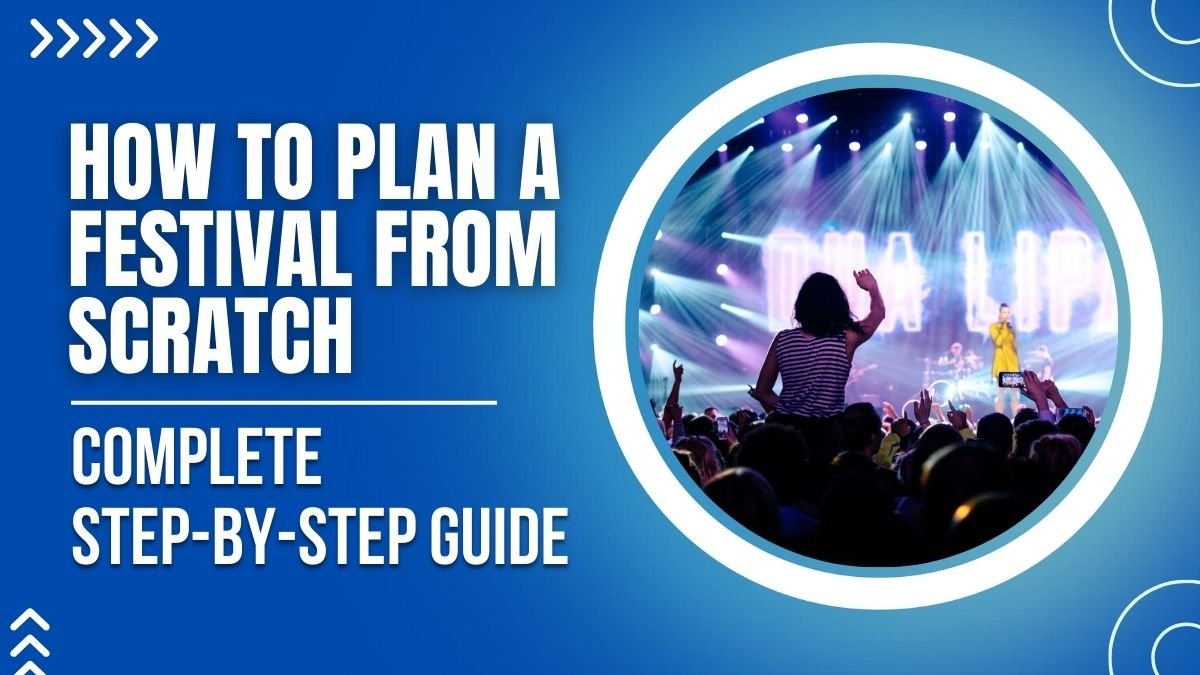Today, music festivals are no longer just a form of entertainment; they’ve become a big business. In the United States alone, approximately 32 million people attend various music festivals each year. Companies and brands also use these events to establish their identity and reach their target audiences. But the question is, how does one plan a successful festival? What are the essential steps, and what should one consider?
This article will provide you with a step-by-step guide on how to plan a great festival from scratch. Whether you’re organizing an event for the first time or have previously held smaller events, this guide will provide you with a solid roadmap.
1. Set Clear Goals and the Right KPIs
Festival planning always begins with a concrete goal. First, clarify with your client or team the true purpose of the event.
A few key questions:
- Which three major festivals are closest to your ideal event?
- What did you like about those festivals, and what did you dislike at all?
- What do you want your audience to say to their friends about this festival when they go home?
- Why is it important to hold a festival now, and why not in the future?
Next, determine KPIs (Key Performance Indicators). For example:
- If you want to increase your social media presence, create an engagement KPI.
- If you want to increase revenue, focus on ticket sales.
- If you want to build long-term relationships, consider community growth as a KPI.
2. Understand the Budget and Spend It Where You Need to Go
Every festival’s budget is different. It’s important to determine what you should spend money on and where you can save.
- Start with small, one-day events, don’t spend money on an entire weekend.
- Give opportunities to emerging artists instead of big-name artists.
- Use social media and digital ads instead of heavy marketing expenses.
- Investing in the perfect venue is a wise investment, as it’s what makes the festival experience truly special.
3. Create an Event Timeline
A successful festival is never created at the last minute. Start planning at least 6 months in advance.
- 3–6 months before: Finalize goals, theme, and artists.
- 1–3 months before: Decide on catering, permits, and extra activities.
- 1 month before: Complete parking, maps, and minor errands.
4. Obtain Licenses and Insurance
A festival is incomplete without permits and insurance. Each city has different permit requirements. The zone a venue falls in (entertainment, retail, industrial) also makes a difference.
Insurance Notes:
- Weather insurance is required for outdoor festivals.
- Insurance should cover any accidents or injuries.
5. Identify the Target Audience
Every festival has its audience. Collect demographic details from your client and develop target personas using social media analysis.
Your festival will only be successful if it’s designed around the preferences and habits of your key audience.
6. Promotion and Ticket Sales Strategy
Digital marketing is the most effective method for festival promotion these days.
- Promote on subreddits, music blogs, and niche communities.
- Use tools like Ticketstripe, Ticketfly, and Vendini for ticket sales.
- Earn extra revenue with VIP packages and deluxe offers.
7. Choose the Perfect Venue
Venues play a huge role in a festival’s success. Choose venues that have hosted events before so that the audience is already familiar with them.
When selecting a venue, consider:
- Location and parking facilities
- Layout and A/V equipment
- Capacity and decor
8. Pitch to Sponsors
Any major festival needs sponsors. Start with the client’s existing sponsors.
Show in your pitch packet:
- How they will gain brand exposure
- Deals like band sponsorship, VIP lounges, or merchandise stalls.
9. Hire Vendors and Staff
Festivals have many responsibilities. Such as:
- Parking Management
- Security and First Aid
- Check-in Team
- Catering and Drinks
If the venue doesn’t have adequate restroom or water facilities, arrange for extra units.
10. Rent additional AV equipment
High-quality sound and lighting are essential to making every performance outstanding. Ask artists about their technical needs in advance.
11. Decor, Lighting, and Weather Plan
The festival’s theme and decor have a profound impact on the audience.
- Place signage at the entrance and exit.
- Display sponsors’ logos and branding.
- Have backup tents and layout plans for inclement weather.
12. Control the Budget
Large festivals cost millions, but smaller festivals can be cost-effective with proper planning.
Saving Tips:
- Hire local talent instead of big artists.
- Book the venue off-season.
- Ask sponsors to reduce catering or beverage costs.
13. Festival Catering Ideas
Food and drinks are a big part of the festival experience. Some creative ideas:
- Small snacks and finger foods (like seafood on french fries).
- Frugal yet fun options like a potato bar or yogurt bar.
- Utilize local food trucks.
- Colorful and Instagram-friendly menus (like red burger buns).
Conclusion
Planning a festival is no easy task, but if you follow the right steps, it can be extremely exciting and successful. From setting goals to budgeting, venues, sponsors, catering, and promotion, each step is important.
If you follow this guide carefully, your festival will not only be a success but also a memorable experience for people.
